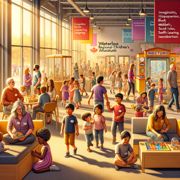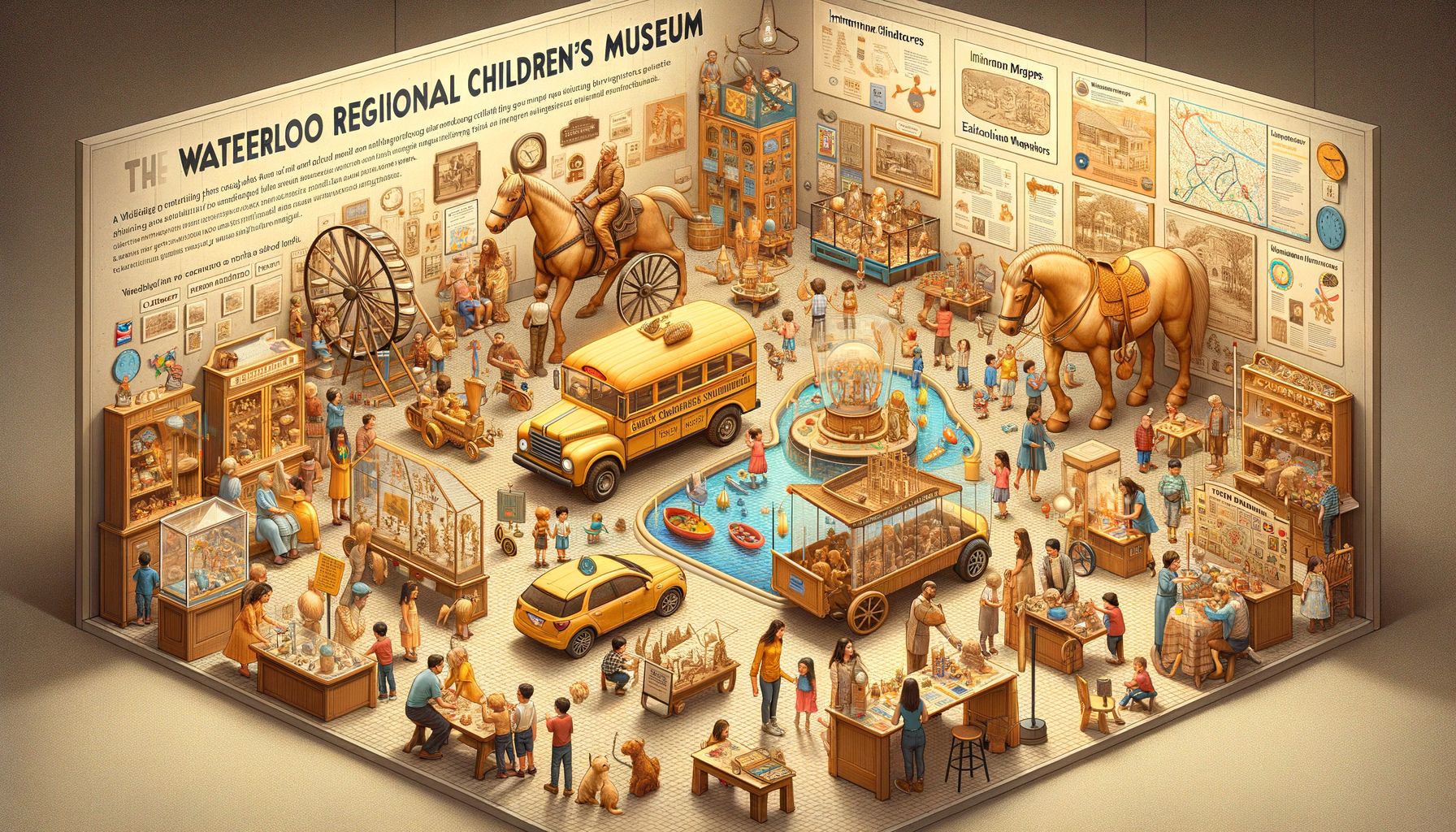

|
home | the exhibits | what's happening | plan your visit | classroom connections | get involved | about us | contact us |
|
|
Exploring the Waterloo Regional Children's Museum: A Comprehensive Guide for FamiliesThe Waterloo Regional Children's Museum stands as a beacon of hands-on learning, creativity, and exploration for families across Ontario and beyond. With its vibrant interactive exhibits, thoughtfully designed spaces, and commitment to accessibility, the museum offers an enriching experience that goes far beyond simple entertainment. Whether you’re a local resident or planning a special trip, understanding how to make the most of your visit can transform an ordinary day into a memorable adventure for your child—and for you. This in-depth guide explores the multifaceted benefits of interactive exhibits, provides practical advice for navigating the museum with young children, highlights accessibility features, and offers resources to help parents and caregivers maximize their museum experience. The Transformative Benefits of Interactive Exhibits for ChildrenInteractive exhibits are more than just play spaces—they are carefully crafted environments that stimulate cognitive development, foster social skills, and ignite curiosity. At the Waterloo Regional Children's Museum, these benefits are at the core of every exhibit design. Enhancing Cognitive DevelopmentChildren learn best through active engagement. Interactive exhibits encourage hands-on exploration, allowing kids to manipulate objects, experiment with cause-and-effect relationships, and develop problem-solving skills. For example, in a water play area, children can observe how objects float or sink and adjust variables to see different outcomes. This type of experiential learning supports early STEM (Science, Technology, Engineering, Math) literacy and lays the groundwork for future academic success. Fostering Social Skills and Collaboration
Many exhibits at the Waterloo Regional Children's Museum are designed for group participation. When children work together—building structures in a construction zone or creating collaborative art—they practice sharing, negotiating roles, and communicating ideas. These social interactions are essential for emotional intelligence and help children navigate relationships both inside and outside the classroom. Inspiring Creativity and ImaginationArt studios and themed pretend-play areas invite children to express themselves freely. Whether they’re painting on a giant canvas or role-playing as doctors in a miniature hospital setup, these experiences cultivate imagination and encourage creative risk-taking. According to a 2022 study by the Association of Children’s Museums, children who regularly engage in creative play show higher levels of innovation and adaptability later in life. Types of Interactive Exhibits at the Waterloo Regional Children's MuseumThe museum boasts a diverse array of interactive exhibits that cater to different ages, interests, and learning styles. Here’s an overview of some key exhibit categories: Science & Discovery ZonesThese areas invite young scientists to explore basic principles of physics, chemistry, and biology through hands-on activities. For instance:
Art & Creativity StudiosCreativity flourishes in spaces dedicated to visual arts:
Imaginative Play EnvironmentsPretend-play areas let kids step into real-world roles:
Nature & Environment ExhibitsThese sections foster appreciation for ecology:
Sample Exhibit Features Table
How to Prepare for Your VisitA little preparation can make your museum day smoother—and more enjoyable—for everyone involved. Planning Your DayStart by checking the Waterloo Regional Children's Museum website for current hours of operation (typically 10 am–5 pm), admission fees (around $12 per child/adult; discounts available), parking details (ample on-site parking), and any special events scheduled during your visit. Pre-booking tickets online is highly recommended during weekends or school holidays due to high demand. What to BringPack light but thoughtfully:
Preparing Your ChildTalk about what to expect: “We’ll see big building blocks,” or “You can try painting today.” Reviewing photos from the museum’s website together can build excitement while reducing anxiety about new experiences. Navigating the Museum with Young ChildrenExploring large museums with little ones requires strategy—especially when balancing multiple interests or energy levels within your group. Stroller-Friendly SpacesThe Waterloo Regional Children's Museum is designed with families in mind: wide aisles accommodate strollers throughout most galleries. Lockers are available near entrances if you wish to store bulky items. Setting a Pace That WorksChildren often become engrossed in one exhibit while wanting to rush through others. Allow flexibility—let your child lead when possible but use transition cues (“After five more minutes here we’ll visit the garden area”). Many families find it helpful to take mid-day breaks in quieter zones like reading nooks or family lounges before returning to busier exhibits. Managing Meals & BreaksThe on-site café offers kid-friendly options such as sandwiches ($6–$8), fruit cups ($3), yogurt parfaits ($4), plus coffee/tea for adults ($2–$3). Outside food is permitted only in designated picnic areas; plan accordingly if your child has dietary restrictions. Tips for Engaging Your Child with ExhibitsMaximizing your child’s learning means moving beyond passive observation into active participation—and fun! Follow Their Lead (But Be Ready With Prompts)Observe what captures your child’s attention naturally. If they’re drawn to building blocks but seem unsure where to start, offer prompts: “How tall can you stack these?” or “What happens if we add another block?” Open-ended questions spark critical thinking without dictating play. Encourage Exploration Across Different ZonesRotate between active (climbing wall) and quieter (art studio) areas based on your child’s mood. If frustration arises—say during a challenging puzzle—model perseverance: “Let’s try another way together.” Document Their CreationsTake photos (where permitted) of finished artwork or imaginative builds so your child can share stories later. Some parents bring small notebooks so kids can draw what inspired them at each station—a great way to reinforce memories after leaving the museum. Engaging Activities Checklist
Accessibility and Inclusivity Features at Waterloo Regional Children's MuseumEnsuring all visitors feel welcome is central to the museum’s mission—and it shows in both physical design and programming choices. Physical AccessibilityThe entire facility is wheelchair accessible: elevators connect all floors; accessible restrooms are located throughout; sensory-friendly maps highlight quieter zones; service animals are welcome everywhere except certain animal-based exhibits due to safety protocols. For those needing adaptive equipment:
Inclusive Programming InitiativesRegular “Sensory Friendly Mornings” allow families who benefit from reduced noise/light levels exclusive early access before public opening hours—an invaluable option for neurodiverse children or those sensitive to crowds. Multilingual signage appears throughout major galleries; select guided tours are offered in French upon request. Staff undergo regular inclusivity training covering disability awareness as well as cultural sensitivity practices relevant to diverse community needs. Special Programs and Themed Exhibit DaysBeyond permanent installations, the Waterloo Regional Children's Museum offers dynamic programming that keeps every visit fresh—even if you’re a frequent guest! Rotating Featured ExhibitsEvery few months brings new themes such as: - “Dinosaurs Unearthed”—interactive fossil digs - “Inventors’ Workshop”—robotics demos led by local engineers - “Celebrations Around The World”—cultural crafts tied to global festivals These limited-time features often include expert-led workshops ($5–$10 extra fee) that provide deeper dives into science experiments or art techniques not found elsewhere in the museum. Weekly Workshops & Drop-In ActivitiesEducators run daily pop-up sessions ranging from slime-making labs on Mondays to music jam circles every Friday afternoon. Most workshops require no registration; simply check schedules posted online or near admissions when you arrive. During school breaks (March Break/Summer Camp), week-long themed camps offer structured programs combining exhibit exploration with STEAM-focused projects—ideal for parents seeking enrichment options during holidays ($200–$350 per week). Resources for Parents and Caregivers
Supporting lifelong learning means equipping adults as well as children! The Waterloo Regional Children's Museum provides numerous resources tailored specifically for parents:
Quick Reference: Family Support Services Comparison
Visiting the Waterloo Regional Children's Museum is an investment not just in entertainment but also in meaningful family connection—and lifelong learning—for both children and adults alike. By taking advantage of its innovative exhibits, inclusive features, specialized programming, and robust caregiver resources, families leave not only with happy memories but also with tools that nurture curiosity long after they’ve returned home.
|
|
|
|||||||||||||||||||||||||||||||||||||||||||||||||||||
|
home | the exhibits | what's happening | plan your visit | classroom connections | get involved | about us | contact us |